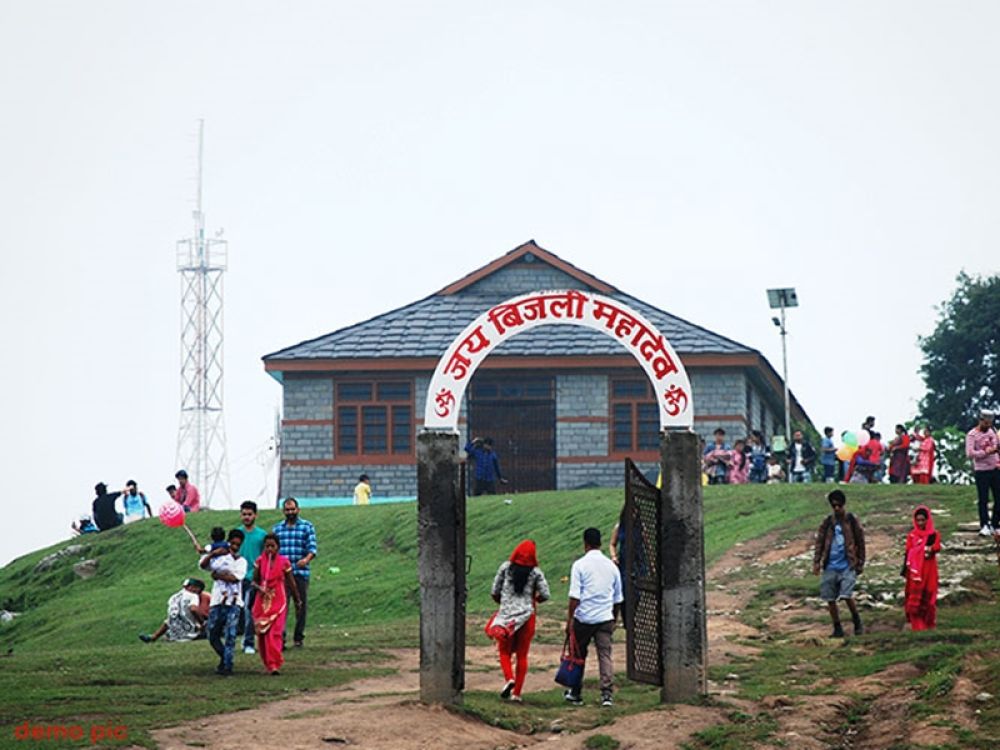

Perched atop the Mathan hills in the Kullu Valley of Himachal Pradesh, India, the Bijli Mahadev Temple is not only a sacred pilgrimage site but also a testament to the unique interplay between nature and spirituality. Dedicated to Lord Shiva, the temple is a renowned religious destination that attracts thousands of devotees and tourists every year.
The history of the Bijli Mahadev Temple is shrouded in mythology and ancient traditions. It is believed that the original temple was built many centuries ago. The name "Bijli Mahadev" refers to the miraculous phenomenon observed here, where the temple spire allegedly attracts divine blessings in the form of lightning, which shatters the Shiva Linga inside the temple. The shattered pieces are then bound together by the temple priest using butter and sattoo (a local flour), in a ritualistic manner, signifying the cycle of creation and destruction that defines the universe.
Tourism to the Bijli Mahadev Temple has a long history, once predominantly attracting local devotees from surrounding villages. Over time, as the word about the temple and its unique lightning phenomenon spread, the temple's fame crossed international boundaries, making it a must-visit destination for tourists looking for a blend of adventure and spirituality. The trek to the temple starts from the village of Chansari and involves a scenic, though occasionally steep, hike of approximately 3 kilometers.
The journey to Bijli Mahadev itself is an adventure, offering panoramic views of the Parvati and Kullu valleys. The trek appeals to enthusiasts and spiritual seekers alike. It is this very synthesis of nature and devotion that defines the tourism experience around the temple. Along the path, visitors are greeted by lush forests, mountain flowers, and occasional wildlife sightings, making the trek an exhilarating experience.
In recent years, the area surrounding Bijli Mahadev has seen an increase in eco-friendly tourism initiatives. This has been in response to a growing trend where tourists are seeking sustainable and offbeat travel experiences. There is a stronger emphasis on preserving the natural environment and the cultural heritage of the region. Homestays and local guides have become an integral part of the tourism economy, providing an authentic experience to visitors while ensuring benefits to the local community.
Apart from the trek to the temple, Kullu Valley has become synonymous with adventure tourism. Activities such as paragliding, river rafting in the Beas River, and camping are now common among visitors looking to add an adrenaline rush to their spiritual journey. This diversification has helped propel Kullu and the Bijli Mahadev Temple to the forefront of multi-faceted tourism destinations.
With its rich history and contemporary evolution as a hotspot for eco-tourism and adventure, Bijli Mahadev Temple continues to fascinate and inspire visitors from around the globe. Its story is a testament to the enduring allure of places where the divine and earthly realms seem to converge.